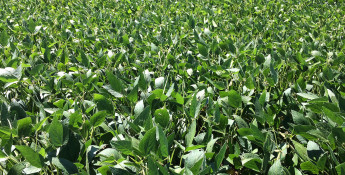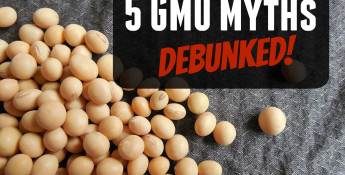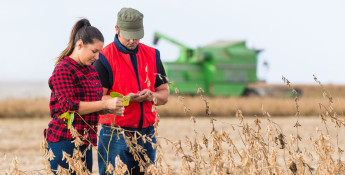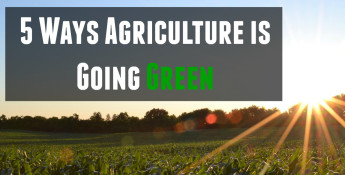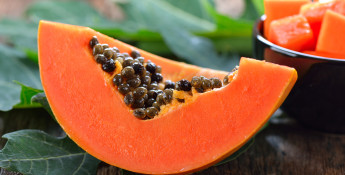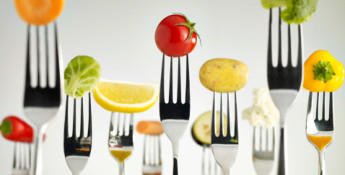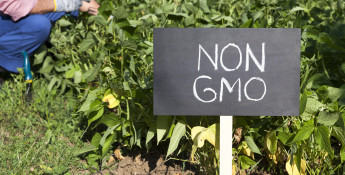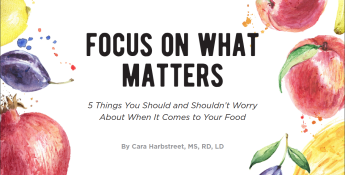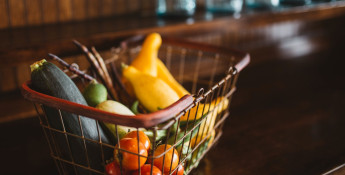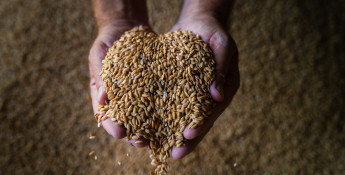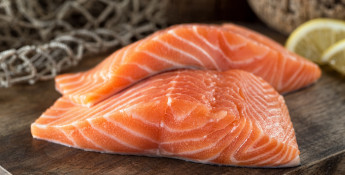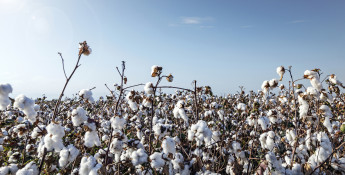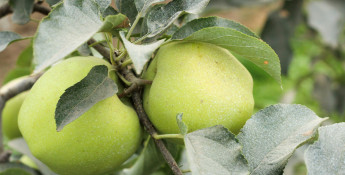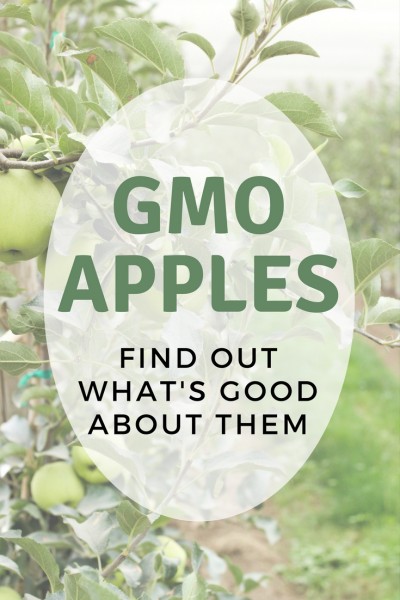By Cara Harbstreet on October 2, 2017
Arctic Apples: Where Technology and Taste Meet
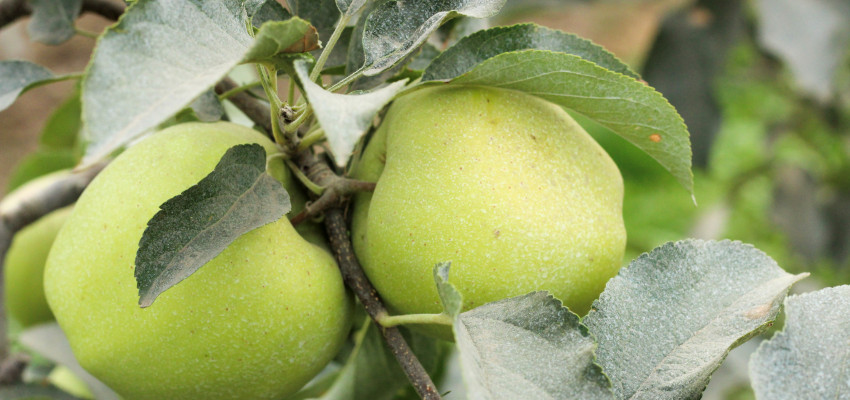
If you’ve ever sliced an apple and noticed the change in taste and color afterward, you’ve been a witness to enzymatic browning. And if you’ve ever tried to feed that slice of brown apple to anyone, you know that’s usually a no-go. The appearance of food is one of the biggest predictors to whether someone eats it and enjoys it - after all, we DO eat with our eyes first.
I was fortunate to attend a sponsored field tour in eastern Washington to learn about Arctic® apples, an apple that doesn’t brown. After spending several days immersed in the workings of the apple industry, I believe my excitement about Arctic® apples is well deserved. Here’s a brief recap about what I discovered while I was there.
Plant Breeding Meets the Needs of the Market
Food waste is an issue receiving more and more attention. Sustainability, environmental impacts and the quality of food are all concerns that impact decisions to purchase a food. Neal Carter and his wife Louisa, the co-founders of Okanagan Specialty Fruits (OSF), recognized these issues and set out to address them. In a time when fruits and vegetables were being bred for specific characteristics, it seemed only a matter of time before they found a solution to enzymatic browning in apples. They recognized that the Golden Delicious apple varietal could serve as the template for developing a fruit that not only tasted great, but offered a solution for food waste attributed to browning.
Arctic® apples are the first non-browning apples and will be available in select markets for the first time this fall. It’s a project more than 20 years in the making. Carter first embarked on the quest to bring a non-browning apple to consumers shortly after founding OSF in 1996. Since then, the technology has evolved to allow for more and more specific selection of genes and traits that will yield the highest quality apple.
The ability to resist browning lies in the gene that enables enzymatic browning to start. In this case, it’s been silenced so the cascade effect of browning is halted at the beginning. When this apple is sliced, bitten, or bruised, the negligible amount of surface browning is stopped in its tracks. Unless the sliced apple is mixed with other fruits, vegetables, or other foods that expose it to enzymes that enable browning, there will be no browning. Aside from that feature, it is identical in nutrition, safety and taste like the Golden Delicious apple that inspired its development.
One of the concerns about genetic engineering is the safety of the technology. However, we learned the high specificity of transgenic technology makes the process of plant breeding faster and more efficient, but not less safe. It is so precise, it’s like identifying two specific railroad ties in a train track stretching from New York City to Los Angeles.
And Carter and his team did not find immediate success; it took 743 trials to identify the genetic variations that would eventually become the first Arctic® apple. In addition, Arctic® apples faced several additional years for regulatory processes to meet the requirements to be planted, harvested and marketed in the United States and Canada. Because this is the first GM perennial fruit, there were additional considerations for this regulatory process. If anything, this GM apple is considered safer by some because of the scrutiny it faced before ever being planted.
High Tech Fruit of the Future
The technology isn’t the only exciting aspect of Arctic® apples. It’s one of the first genetically modified products consumers can experience first-hand. Most GM crops are not directly available for customers to purchase. Commodity crops like corn, soy, canola and cotton are intended to be used as inputs to produce other ingredients or goods. By the time they reach consumers they’re a far cry from their original form. But Arctic® apples are designed to look, feel, and most importantly, taste identical to a traditional Golden Delicious apple.
After tasting my first Arctic apple, I can confirm: it is indeed identical. If I had not been aware that the crisp, fresh, delicious apple slice in my hand was genetically engineered to preserve that freshness, I would not have known otherwise. As we rolled through eastern Washington to our field site visits, we snacked on a bagful of slices that had been prepared the evening before. After nearly 24 hours, the last slices at the bottom of the bag looked identical to an apple I could have sliced on my kitchen counter at home just minutes ago. In other words, fresh and delicious.
As a dietitian, one of the most exciting prospects of introducing Arctic® apples to the market is the potential to reduce the amount of food wasted in homes, schools and restaurants across the country. My time in school food service and outpatient clinical catering with boxed lunches made it obvious there is a gap between convenience and taste in the sliced apples currently available. Again and again I watched perfectly good (and nutritious) fruit being tossed into the garbage based solely on its lack of good taste and good looks.
In addition, I’m eager to see if this will encourage higher consumption of fruits among Americans of all ages. Fruit consumption, particularly apples has been stagnant in the last several decades. Americans crave convenience, and whole apples aren’t always considered the most convenient thing to eat (although they are incredibly easy to carry). A pre-sliced, packaged apple that doesn’t brown could have great appeal in the snacking category that promotes more fruit consumption or replaces other highly processed snack foods.
Imagine being able to pack your child’s school lunch for the week using apples that don’t brown. Or adding sliced apples to your favorite salads, slaws and more. Or finding prepackaged apples in all shapes and sizes on your grocery store shelf, just like you do with shredded, sliced, or baby carrots. The culinary uses bring the technology full circle and if tasting is believing, then I’m a believer.
The True Test Hits Shelves Soon
Now that the orchards are mature enough to bear their first fruitful harvest, customers in select markets in the Northwest U.S. can expect to see Arctic® apples hitting the shelves this month. However, the small harvest this year won’t be enough for further distribution. Americans in other regions will have to wait until 2018 to try them for the first time. Sliced Arctic® apples will be available in 10 oz. bags, which is the equivalent of about one and a half to two apples. Carter and OSF are taking a somewhat unique approach to price. Although their recommendation is to market them at the industry average, they are leaving the retail price and shelving strategy up to individual retailers. Additionally, transparency is a high priority for Carter and the marketers of Arctic® apples; there will be clear labeling on packages so shoppers are aware of what they are purchasing when they pick up a bag.
Not a fan of Golden Delicious? The next varieties available will be Granny Smith, Fuji and Gala. These varieties are in various stages of field trials but plans are being made to replicate the non-browning features in some of the most popular varieties to give customers more options than ever before.
Eventually larger bags, individual snack packs and intact apples will roll into markets as the orchards are able to yield a larger supply. The cost to establish a new acre of orchard is estimated to be between $20,000 and $25,000 so expansion is no small undertaking. The true test will come as customers start to purchase and taste Arctic® apples for themselves.
What do you think about the non-browning Arctic® Apple? Would you be willing to give it a taste test?
Resources to Learn More:
Best Food Facts Interview with Neal Carter
In-Depth Post on Street Smart Nutrition
Did you enjoy this story? You might also enjoy these:


